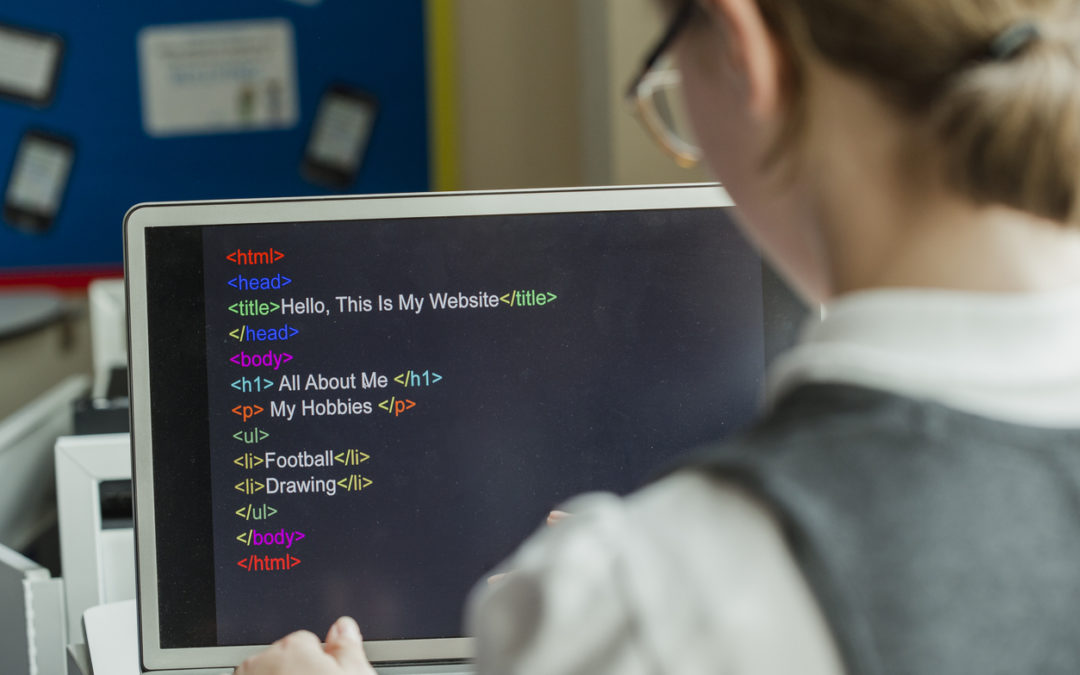3 Ways (Most) Students Learn to Code
Choosing the right path to teach students to code depends on their grade band, experience and the school’s resources. There are many K-12 coding programs available specifically designed to instruct students in coding principles. For schools that do not have the resources to purchase these programs, free online materials can support the internal development of a proprietary computer coding curriculum.
There are generally 3 methods that educators will use in combination to teach students to code:
1. Conceptualization
While some students may be familiar with the terms “coding” or “computer programming” and be familiar with using a computer, the first step in learning to code is grasping the concept of what coding means and how it applies to computers.
Students should first understand what a computer is and what they can be used for, then be able to understand the concept that coding provides “instructions” to a computer to complete sets of tasks.
Part of this conceptualization should also be understanding that computers use specific coding languages to understand these instructions. This can include an introduction to some of the major coding languages such as HTML, JavaScript and Python.
Finally, students should understand the types of tasks that are commonly completed by a computer – and that the possibilities are limitless. This is the point of learning coding where students will understand that they have the potential to create anything they can dream up with the right tools, skills and perseverance.
2. Games & Challenges
Games and challenges are powerful tools in teaching students to code. Using games and challenges to teach coding gives students a familiar opportunity to understand and apply coding concepts and skills. Games and challenges allow students to apply newly learned skills in a fun, engaging and hands-on environment.
Games and challenges can be tiered to progress as students advance in their knowledge. Simple games early in the learning journey can help students with basic coding concepts, while more complex games and challenges can reinforce more advanced coding skills as students’ abilities progress.
3. Individual & Collaborative Projects
Utilizing individual and collaborative projects is a great way to help students as they learn to code. These projects provide a platform for allowing students to use creativity and critical thinking skills to achieve a specific goal. Projects can be personalized by student, class or grade bands to suit the students’ abilities and the educators’ goals.
Collaborative projects let students work in a more “real world” environment while helping stretch creativity and problem-solving skills. These projects not only build coding skills, but also soft skills such as teamwork and cooperation.
While individual and collaborative projects may still have the safety guardrails of more specifically prescribed coding games and challenges, they also typically require a more cumulative breadth of knowledge and skills to complete. Tools for these projects may include teaching platforms such as game design, virtual robotics and more.
Explore EasyCode
Learning.com offers a K-12 program called EasyCode that teaches students to code in an effective, hands-on, easy-to-implement platform. Learn more about EasyCode by clicking the button below.

Learning.com Team
Staff Writers
Founded in 1999, Learning.com provides educators with solutions to prepare their students with critical digital skills. Our web-based curriculum for grades K-12 engages students as they learn keyboarding, online safety, applied productivity tools, computational thinking, coding and more.
Further Reading
Measuring Digital Readiness: What Metrics Actually Matter?
Technology is everywhere you look inside your school, but true digital readiness goes far beyond having devices in classrooms. For administrators,...
Teaching Students About AI in School and Beyond
Artificial intelligence is reshaping the classroom. As tools like ChatGPT, image generators, and voice assistants become part of students’ daily...
AI in K-12: How to Integrate It Without Overwhelming Your Teachers
Artificial Intelligence (AI) is rapidly reshaping education, offering powerful tools that promise to personalize learning, save teachers time, and...




